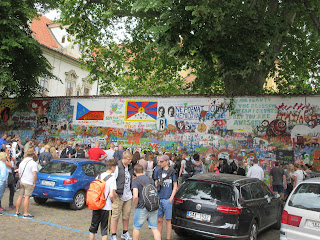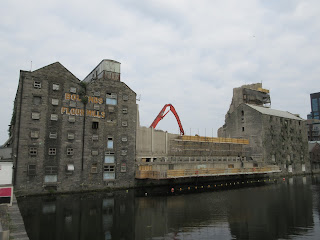For fans of Beatles music, especially
that of John Lennon, the Lennon Wall in Prague is a source of inspiration and
community. During the communist period, it was a blank wall across a small
square from the French Embassy. After his assassination in 1980, the residents
of Prague turned the wall into a makeshift memorial for John Lennon. It honored
his life, music and ideas with graffiti that depicted his image and lyrics. Oftentimes,
people would write messages about their hopes for peace, tranquility and
fulfillment. The music of the Beatles was officially banned in Czechoslovakia. The
authorities would whitewash the wall in an attempt to keep a lid on a celebration
of Western music and ideas, only to have residents to reestablish the memorial
again.
 |
| The Lennon Wall in May 2016 |
I have been visiting the wall
for several years. The increase in the number of people has meant that the
Lennon Wall is no longer a secret shared among a few people. Once, I could
bring a dozen students to the wall and we would constitute a majority of
people. It is sad to see that more nationalist images have begun to crop up.
Two large Czech flags adorned the wall this year. Nevertheless, there remains a
feeling of goodwill and comradeship. It is common for people to join in song
and greet one another while visiting.
I was talking to a student who
was in the military, standing at the edge of the square watching the visitors.
He was clearly moved by the experience of being at the wall and interacting
with others. He noted that it was nice to see people speaking different
languages, from different parts of the world, singing together rather than
trying to kill each other. I am willing to bet that John Lennon would have been
happy. 



